Thu 04 / 10 / 12
Creative Process: An interview with Oliver & Graimes
Oliver & Graimes is one of Brighton's most established design businesses, with a 30+ year history and today working with clients including WJ King, Kuoni and the American Express Stadium. It's a family business, with David Graimes as chairman and brothers Gareth and Gavin Graimes as joint managing directors. As my business is concerned with the management of creativity, I wanted to find out what makes them tick from a creative point of view.
Who do you admire?
David: Martin Sorrell from a business point of view and his formal approach. I always make sure that all staff are suited and booted to meet clients, because even though we are a creative business, we keep a very formal relationship with clients, which is built on mutual respect and professionalism. We're not necessarily known as a major creative agency, we're more known for getting the job done - a really good quality job and good quality product.
Who is the most creative person you know?
David: The most creative person I've ever known was Richard Rolfe, my ex business partner and creative director who died microgliding in the 1990s. It was his approach to life - every part of his body was creative. He had a lot of creative confidence - he argued with clients, and he always seem to win them over, to convince them that his way was the right way.
Can creativity be taught?
David: Yes, because there's no definition of creativity. It's subjective, so it means something different to everybody. Some people are naturally more creative, although your life experiences inform how you think. It's important to have confidence and a willingness to share your ideas - openness is very important.
How did you start out?
Gareth: I took an apprenticeship in the truest sense in that as a kid I came along to the office at weekends, and helped out with things like cromalins. I did a lot of repro work in the studio, before getting into web programming using HTML, CSS and Java, then moved more into the management side of the business. I still get called in to help out on the production side though - I enjoy it.
Can you give an example of a recent piece of creative work produced by O&G - how it was conceived and delivered?
Gareth: We've just designed a different approach to a brochure for our client Global Immersion and their product Fidelity Go. We had a timeframe of two weeks, and a very loose brief from the client - all they could tell us was that they wanted a brochure that wasn't a brochure! They wanted something different, that would stand out at an exhibition - something that wasn't too clunky and heavy to carry around. So we had a meeting to discuss the brief.
David: We always have a meeting in person so you can read their body language and see their earlier reactions face-to-face.
Gareth: After spending some time on my own in my office thinking about it, I had a series of meetings with one of our designers to bounce ideas off each other. The first job is to get all the silly and obvious ideas out, then you can move on to really innovative, good ideas. We would talk, the designer would go off and work something up, then we would talk again. We also got feedback from the printer to find out what was possible. We held another meeting with the client, at which we showed some scamps (rough sketches). We didn't have to work up a full mock-up, having worked with us for many years the client trusted our approach.
David: The challenge with creativity is that everybody has a mind's eye of what they want but they can't verbalise or visualise it so the challenge is to get that out - to get to a mutual understanding to help the client see what he's thinking and to give him what he wants as a result. I find they nearly always respond to a visual cue - the sooner we can present them with a sketch or a mock-up the better - it helps them take emotional ownership of an idea we as well.
Gareth: In this case the mechanics of the design were very important, which is why we have a very good relationship with printers. They probably think of us as pretty demanding, but we'll always try and partner with printers so they give good ideas back and add to the finished product. It's a really important relationship that we have with all our suppliers.
The finished product is shown below - a clever use of materials and design to produce an innovative 'brochure' that definitely stood out against the competition.
Interview by: James Allen, Creative Huddle
James is managing director of Creative Huddle, which helps people improve their creative abilities through workshops and consultancy.
You might also like:
If you want to contribute to the Chamber blog, contact us on hannah@brightonchamber.co.uk


